The maritime industry is not apt to adopt new technologies. Sailing ships made of wood had been used for thousands of years; until just over 200 years ago the technology lept first to steam ships and then, with a surprising speed, to modern giant vessels equipped with radars, GPS, ECDIS and other smart devices.
Since that time maritime systems have developed exponentially, so we created a guide explaining technologies that will change the shipping industry and maritime careers in the next 10 years or so.
There are three most prominent tendencies that will guide further digitalization of the shipping industry:
- Smart technologies overtaking the majority of processes on board;
- Arrival of unmanned ships;
- Eco-friendly shipping.
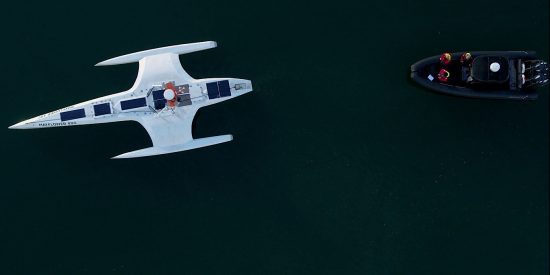
Smart Shipping
“An opportunity to deal with hard data
rather than basing decisions on supposition,
speculation or gut feel will make ship management much easier.”
Superintendent, the responder of IMarEST “Technology in Shipping” research
Smart shipping is a general term for digital technologies designed to make shipping operations safer and more efficient. For instance, weather route planning, Dynamic Positioning, cargo, ballast and emission control systems are included in the list.
The IMarEST (Institute of Marine Engineering, Science and Technology) in association with Clide&Co insurers have recently conducted research on ‘the impact of technological change on the shipping industry’. 48% of responders think that smart shipping technologies will change the maritime industry in the next 10 -15 years.
Ship crews, managers and port authorities already make good use of digital technologies. For instance, the Port of Rotterdam collaborates with IBM on the smart solution that helps the port to prepare accommodation when the vessel is still 42 km away from Rotterdam.
Meanwhile, there are more technologies that will become habitual in the near future:
1. 5G technology will allow smart drones to be used for real-time ship inspections; improve ship-to-shore communication for traffic management and alleviate a constant seafarers’ problem of reaching out to their families.
Moreover, Kun Yang, the board chairman of the world’s first maritime 5G project, believes that this technology “will play an important role for the remote control of autonomous ships in the future” as well.
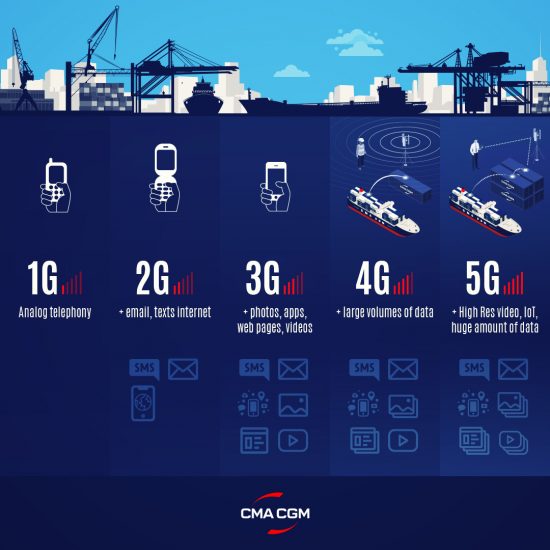
2. IoT or the Internet of Things. This also is an inclusive term for gadgets and machines that can be controlled remotely via the Internet. 5G technology is necessary for the implementation either, but control of hatch doors, bays, bulkhead systems and hydraulics without the need for a crew member to be present on the spot will be among the advantages.
3. Digital sensors. Future ships will be covered with sensitive data collectors measuring and recording all aspects of the vessel operation up to fault detection and discovering areas subject to maintenance or repair. There are obvious pros in this technology, but objectors point that it will lead to inevitable deterioration of engineering and navigational skills of seafarers.
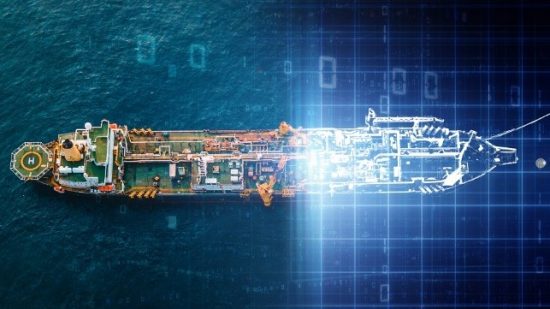
4. Blockchain technology. Blockchain has been used successfully in the financial sector for a while; and today engulfs the maritime industry. Many shipowners and logistic companies use cloud-based applications to unite travel log books, spreadsheets, databases and so on in one place.
Each bit of information is recorded separately and chronologically, so no alteration in data can be made without a go-ahead from other users. Though it sounds complicated, blockchain technology reduces the amount of frauds and human errors, and makes millions of containers easier to track, entailing reduction of costs.
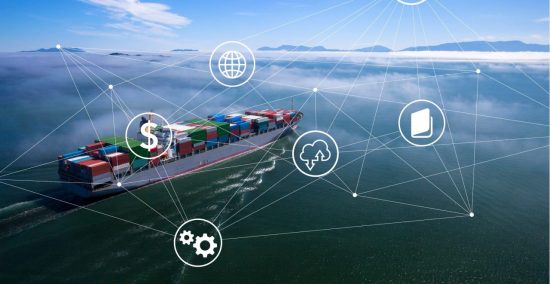
It is expected that the worldwide application of smart shipping technologies will not affect the number of seafarers, although additional training will be required as crews’ role shifts to supervision and maintenance of digital devices.
Nevertheless, this total switch to digital shipping is bound to result in a fully-fledged autonomous ships’ arrival in the near future as well.
Unmanned Ships
“While many countries have adopted domestic laws to protect data, privacy and national interests, the laws that apply to international shipping remain undeveloped. Inaction or simply waiting on the sidelines for rules or requirements is clearly not a viable approach but what exactly is expected of a reasonably prudent shipowner?”
Joe Walsh, Clyde & Co, Long Beach
Despite a general assumption that autonomous or semi-autonomous ships will replace conventional vessels, the timeline of such a transition remains vague. There are several serious issues concerning cyber security, insurance and collision avoidance that may delay the arrival of unmanned ships.
How do autonomous ships work?
Autonomous ship is furnished with infrared and visual cameras, radar, lidar, GPS and AIS along with various sensors and edge devices. All data collected is then processed by AI (artificial intelligence) systems either on board or in some mission control center to determine course and the appropriate behavior.
Autonomous Ships in 2021
Most prominent IT and shipbuilding companies from IBM to Samsung Heavy Industries experiment with unmanned ships (UMS) these days. We have previously explored Kongsberg’s Yara Birkeland and Rolls-Royce’s project MUNIN in our Shipping 2030 article.
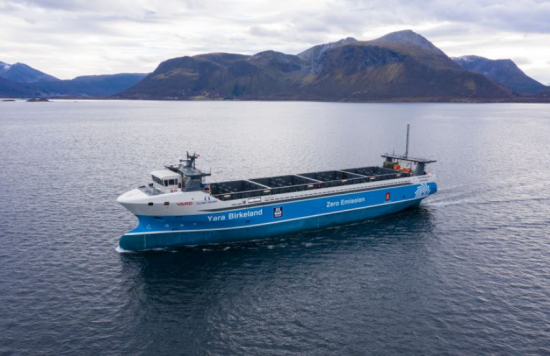
An autonomous 120 TEU container ship Yara Bikerland should have been prowling Norwegian waters between Yara’s plant in Porsgrunn and the ports of Breivik and Larvik by now, but the Covid-19 pandemic delayed an ambitious delivery that has already cost Kongsberg and Yara above $25 mln. The launch date is now set at the end of 2021.
Today the maritime community tracks the Transatlantic voyage of another unmanned concept. Fully-autonomous, AI powered marine research vessel Mayflower has started her journey from Plymouth on the 7th of September 2021. MAS400 is a trimaran constructed by non-profit marine research organization ProMare with support from IBM and numerous other partners.
The Mayflower is 15m (49ft) long, 6.2 (20.3 ft) meters wide and weighs about 5 tonnes. Her maximum speed is 10 knots achieved with the help of a solar-driven hybrid electric motor. The MAS is intended to cross the Atlantics collecting scientific data about the ocean and testing the ability of AI to operate marine vessels without any human involvement.
This is the second Mayflower’s attempt to cross the ocean. The first one in June this year was unsuccessful. The intriguing fact is, though, that the US Navy plans to build a fleet of small and medium-sized unmanned ships that look very much like a Mayflower project.
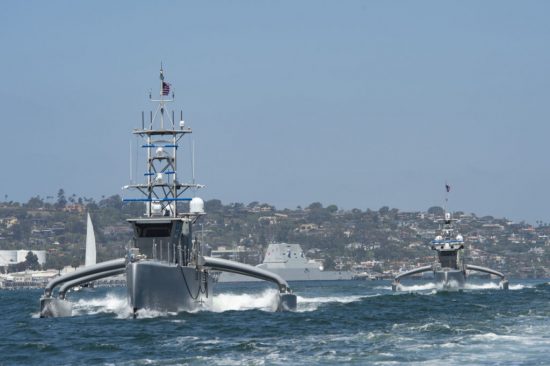
Meanwhile, a Chinese-built 300 TEU cargo vessel is about to enter operation in October 2021. The 5000 DWT autonomous vessel AV Zhi Fei will be employed on domestic sails between Dongjiakou and Qingdao.
https://www.youtube.com/watch?v=4JZ1YDm5fqQ
AV Zhi Fei was constructed by Navigation Brilliance (Qingdao) together with Dalian Maritime University and the China Waterborne Transport Research Institute. The unmanned ship is 117 m (384 ft) long and her maximum speed is 12 kn. Navigation Brilliance plans to build a fleet of boxships carrying between 500 to 800 TEUs if AV Zhi Fei proves to be successful.
Advantages and Disadvantages of Unmanned Ships:
Having discovered the basics of autonomous vessel technology and recent developments, it’s high time to look into their pros and cons.
-
Reduced operational costs:
To be precise, crew costs typically account for about 20 – 30% of the total cost for a cargo ship’s journey, so unmanned ships offer:
– no travel arrangements;
– no port calls for crew changes or restpits;
– no wages paid to seafarers;
– no need to supply and support crew members during voyages.
The most obvious plus of having no crew on board also leads to:
– Raised operational costs onshore (Building operational centers and employing engineers might cost a fortune).
– It would be eminently more difficult to repel any assault (cyber or physical) without any crew onboard; and almost impossible to regain control over the ship.
2. No accidents as a result of human errors.
AGCS (Allianz Global Corporate & Specialty) has estimated that 75% to 96% of marine accidents can involve human error.*
This great advantage has the opposite side as well. Experts fear that human errors would simply transfer to remote operational centers or IT personnel who, quite like crew members, might experience fatigue and make a critical error in the code.
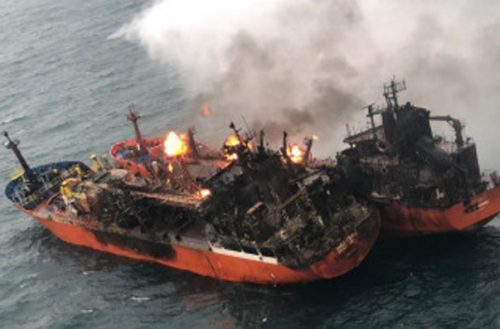
3. Increased financial and fuel efficiency.
Unmanned ships require no living quarters, galleys, plumbing and other facilities that make living and working on board possible. Autonomous ships allow more cargo space and improved fuel efficiency.
On the other hand, unmanned ships need more hi-tech equipment which is likely to be exorbitantly expensive.
In addition, the usual lifespan of a commercial vessel is 25 – 30 years, but in case of unmanned ships it would be reduced several times as IT technologies evolve faster compared to machinery systems.
4. Piracy eradicated
Rolls-Royce believes that future ships will be of no interest for pirates as there will be no crew to kidnap and cargo systems unavailable for manual operations.
Others are convinced that piracy will change its form; and we can well see an autonomous vessel hijacked and ransomed in the near future.

5. Cyber security?
According to the authors of the “Maritime Cyber Security: A Growing Threat Goes Unanswered” article published in Intellectual Property & Technology Law Journal “The maritime industry has been lagging 10–20 years behind other industries and leaving computer networks insecure and open for intrusion by organized crime and state actors”.
Meanwhile, the memory of the cyber hack that took down the largest fuel pipeline in the U.S. (Colonial Pipeline) is fresh in memory. It brought about historic fuel shortages across the East Coast and appeared to happen as a result of a single compromised password.
6. Lack of Regulations
The industry is still unprepared for the arrival of autonomous ships.
For instance, unmanned ships don’t comply with the main maritime safety regulatory documents like, say, Rule 5 in the International Regulations for Preventing Collisions at Sea (COLREG) which requires there to be a lookout present in order to avoid collisions. More to the point, the International Convention for the Safety of Life at Sea (SOLAS) requires ships to be able to assist in search and rescue operations, such as picking up survivors in case of a shipwreck. These conditions are simply incompatible with autonomous ships.
It is obvious that these are early days for autonomous shipping and the international maritime industry will embrace UMS very cautiously. So, the time of seafaring has not passed yet. Furthermore, the above mentioned IMarEST research shows that seafarers most probably will be transferred to work in operational centers upon the arrival of truely unmanned ships.
Green Ship Technologies
‘New technologies for greener shipping’
has been chosen as the World Maritime theme for 2022.
IMO Secretary-General Kitack Lim
It is common knowledge that IMO is aiming for 0% greenhouse-gas emissions from the shipping industry by 2050. Therefore, hi tech technologies are called to make shipping more environmentally friendly.
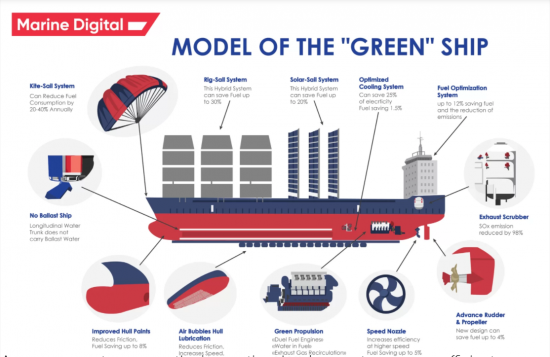
Green shipping technologies include:
- Alternative fuels and fuel purification systems (LNG, methanol, ammonia, biofuel, hydrogen or scrubbers).
- Wind and solar hybrid propulsion systems which promise to reduce CO2 imprint up to 90%. These systems are tested all over the world, but the most promising concepts today are:
- RO-RO ship Oceanbird with her five 80 m rigs and carbon sails. The biggest sailing ship will carry 7 000 vehicles across the Atlantic Ocean in 12 day. The delivery is scheduled for 2024.
- Turanor PlanetSolar catamaran equipped with 29 000 solar cells which has circumnavigated the globe successfully.

3. No ballast systems
Scientists all over the world have been raising alarm seeing how sediments and microorganisms transported in ballast waters destroy ecosystems.
This process is called a biological invasion and can become devastating. For instance, Black Sea mussels brought to the Great Lakes with ballast waters in the 80s have turned them into poisonous waterways in just 30 years. It appears that mussels emit phosphor which fuels an abnormal growth of cyanobacteria (toxic blue-green algae) that affects the Lakes ecosystem.
4. Improved shipbuilding technologies
Advanced propeller designs cut fuel consumption up to 4%, speed nozzles add 5 more percent to the fuel economy and as a consequence reduce NOx and COx emissions .
There are also Air Bubbles Lubrication systems and new age hull paints which eliminate friction and save up to 8% more fuel.
5. Permanent Magnet (PM) thrusters
This brand new technology ensures improved maneuverability, reduced noise and higher propulsion efficiency, cutting both energy consumption and environmental emissions.
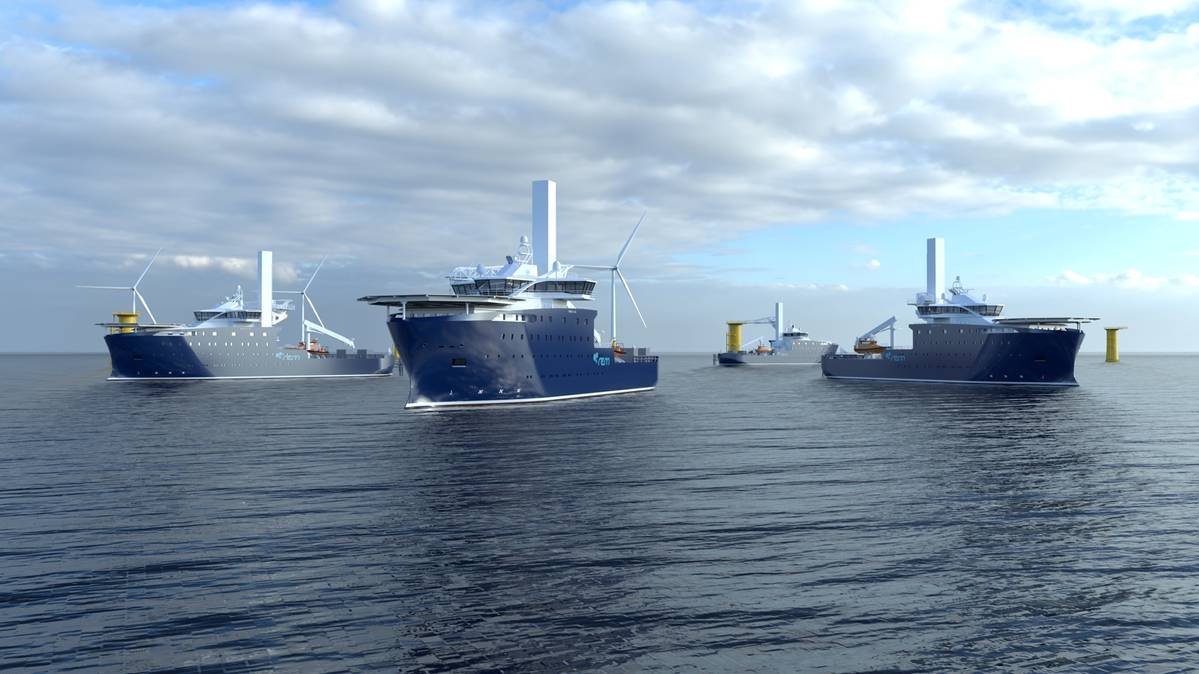
Kongsberg Maritime has engaged VARD shipyard to build two Construction Service Operations Vessels (CSOV) for REM Offshore with the biggest PM package in the world. The thrusters will be controlled by Kongsberg’s K-Master bridge solution. This is an all-in-one working environment which combines dynamic positioning and manoeuvring functionality controlled by joy-stick by one operator.
*Safety & Shipping 1912-2012. From Titanic to Costa Concordia

